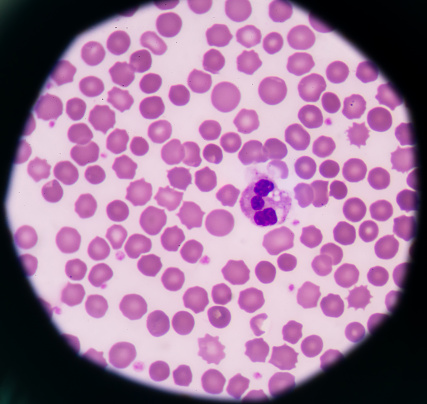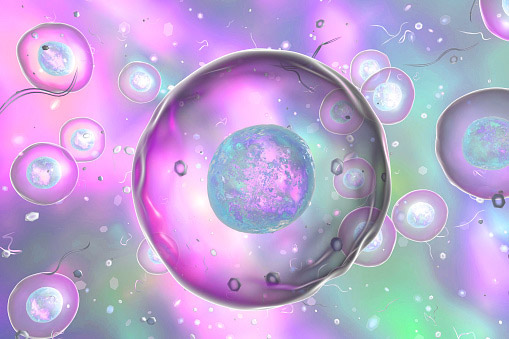
THE DIETARY SUPPLEMENT 4MU (4-METHYLUMBELLIFERONE) IS AN EFFECTIVE CHEMOPREVENTIVE AND THERAPEUTIC AGENT FOR PROSTATE CANCER
July 18th, 2017By Jonathan V. Wright, M.D.
Just in case any of us think the title of this can’t be so, it must be nonsense—a dietary supplement that effectively prevents and treats prostate cancer—this was and is the title of an article published in the Journal of the National Cancer Institute (“JNCI”) in 2015. Yes, that’s the Journal of the National Cancer Institute of these United States, supported by taxes paid by you and me, and of course the printing presses (electronic and otherwise) at the Federal Reserve Bank.
So that was 2015….why haven’t we seen this dietary supplement for sale in our health food stores, compounding pharmacies, on-line, or at the Tahoma Clinic Dispensary? Why—in 2017—would any of us be forced to go overseas for to buy a safe, natural product which the Journal of the National Cancer Institute told us in 2015 is “an effective chemopreventive and therapeutic agent for prostate cancer”, especially when the same JNCI article tells us that “4-MU is….non-toxic”?
It’s likely you already know the answer to that…. so let’s review the findings reported in this and other research publications concerning 4-MU (the short name for 4-methylumbelliferone). The researchers worked with mice deliberately bred to develop prostate cancer and prostate cancer metastases at mouse puberty, which is (for these mice) twenty-eight weeks of age. Technically, these mice are termed “TRAMP” mice and no kidding, the prostate cancers they develop are considered to “closely mirror the pathogenesis of human prostate cancer”[1].
As expected, these mice all developed prostate cancer and metastases of prostate cancer at twenty-eight weeks. One group received a placebo; the other group were given 4-MU, 450 milligrams per kilogram per day. The researchers reported that both the original prostate cancers and metastases were “abrogated” (research-ese for eliminated) in the 4-MU treated group. The abstract of their publication concluded: “4-MU is an effective, non-toxic, oral chemopreventive and therapeutic agent that targets prostate cancer development, growth and metastasis….”
The opening sentence to the full article said: “Effective control of localized prostate cancer and of its metastatic spread by consumption of a non-toxic dietary supplement can potentially delay/avoid treatment of low-risk localized prostate cancer and halt progression in patients with advanced disease. 4-MU is a dietary supplement consumed in Europe and Asia for improving liver health.”
Prostate cancer isn’t the only cancer against which 4-MU has been reported effective. Ovarian cancer appears to be another possibility, as reported by Japanese researchers[2]. Rats were “inoculated” with human ovarian cancer cells injected into their abdominal cavities. One group was then given a “carrier base” only, and the other group got 4-MU with the “carrier base”. All of the rats in the carrier base only group died in thirteen days. The rats in the 4-MU group were given this treatment for only fourteen days; then treatment was stopped; the researchers reported that survival time was significantly prolonged (p<0.05 for the statistically inclined) in the 4-MU group even though 4-MU treatment had been stopped at fourteen days. Despite discontinuance, 4-MU also was reported to reduce dissemination of ovarian tumors throughout the rats’ abdomens, as well as reducing ascites (scientese for edema fluid in the abdomen). The researchers concluded: “….this is the first study to report an inhibitory effect of 4-MU on ovarian cancer.”
Breast cancer is affected by 4-MU. Using human breast cancer cells (MDA-MB-231 for the technically inclined) grown in culture plates, researchers demonstrated that 4-MU “significantly inhibited cell growth and induced apoptosis (cell death)…..4-MU treatment also inhibited cell motility as well as cell invasiveness…” The human cancer cells were then injected into the bones of mice. In the group of mice treated with 4-MU, the invasion of the human cancer cells into the bones was significantly inhibited.[3]
4-MU has also been reported to inhibit breast cancer cells in dogs[4]. In the article abstract, the researchers wrote: “We examined the antitumor effect of 4-MU on CF41 mesenchymal-like canine mammary tumor cells…..since 4-MU exhibits anti-tumor activity in mesenchymal-like cells, it may be a useful inhibitor of canine mammary tumor invasion and metastasis.”
Osteosarcoma is a bone cancer which occurs most frequently in adolescents and young adults. Not infrequently, it metastasizes (often to the lungs) “colonizing” other areas away from its original location. Investigating osteosarcoma in mice, the researchers reported: “4-Methylumbelliferone is a promising therapeutic agent targeting both primary tumors and distant metastasis of osteosarcoma….”[5]
Melanoma (a skin cancer) frequently metastasizes from the skin to elsewhere in the body. Once again working with mice (doing such research in humans isn’t ethical) researchers reported[6]: “….4-methylumbelliferone has an inhibitory effect on the liver metastasis of….melanoma cells and therefore shows promise as an anti-metastatic agent.”
Another research group wrote about squamous cell cancer of the esophagus, starting their report by writing: “Oesphageal cancer is a highly aggressive tumor entity with at present poor prognosis….the median survival time [after diagnosis] is less than one year.” Once again, the “research subjects” were mice, about which the researchers wrote: “Treatment with 4-MU not only was associated with decreased tumor size, but also caused remarkable alterations in tumor morphology” (in English, the tumors in the 4-MU treated mice looked very different than tumors in mice not treated with 4-MU).
Steve Jobs, founder of Apple Computers, and famous Hollywood actor Patrick Swayze died relatively rapidly from pancreatic cancer. “Conventional” treatment rarely cures pancreatic cancer, at best adding one or more months to a sufferer’s lifetime. (More than a century ago, Dr. Joseph Beard of the UK discovered the reason for this, but that’s a subject for another time.)
In February 2017, another group of researchers reported about what happened to human pancreatic cancer cells (“MIA PaCa-2” cells for the technically inclined) and the tumors they formed in mice. The researchers reported[7]: “A suspension of tumor cells was injected into the abdomens of mice. Tumor-bearing mice were randomly divided into two groups that were treated with or without 4-MU…..After 72 hours of treatment, 4-MU inhibited cell proliferation…4-MU also suppressed the amount of [cancer] cell migration and invasion…..the percentage of apoptotic [self-destructed] cancer cells was significantly increased in cells treated with 4-MU….in conclusion, our findings show that 4-MU had anti-cancer properties in a [human] pancreatic cancer cell line and improved survival times in mice with pancreatic tumors. The results of our study suggested that 4-MU may have effectiveness as a novel anticancer agent for the treatment of pancreatic cancer.”
4-METHYLUMBELLIFERONE (4-MU) SAFETY
Maybe it’s not safe? In addition to the statement in the JNCI article that 4-MU is effective and non-toxic, in 2015 another article was published concerning the safety of this dietary supplement[8], which is available over-the-counter in some (but not all) European countries where it goes by the names “hymecromone” and “cantabaline”. Here are excerpts concerning safety of 4-methylumbelliferone (“4-MU”) from this second publication:
“Several clinical trials in humans, including randomized placebo-controlled, have been published on hymecromone and all demonstrated excellent safety during short-term administration of approved doses….Taken together, at least 182 patients have been exposed in clinical trials and no serious adverse events from hymecromone were reported. The longest reported duration of administration of hymecromone was a multiple-dose study of oral administration of hymecromone (4-MU) at 1200 milligrams per day (400 mg three times/day) for three months in 20 participants with biliary dyskinesia…”
“The overall safety of hymecromone is further supported by animal data noted in the Italian Medicines Agency “package insert” which notes “acute toxicity has proved to be very low: the LD50 [the amount of a toxic agent sufficient to kill 50 percent of a population of animals] for oral administration is 7593 milligrams per kilogram [2.2 pounds] in mice and 6220 milligrams/kilogram in rats. Protracted oral administration in the range of 800–2400 milligrams/kilogram/day for three months, and in the rat 400–1000 milligrams/kilogram/day for four months has shown excellent tolerability…”
“Taken together, the clinical experience to date suggests hymecromone is a safe and well-tolerated oral medication. The safety of oral hymecromone doses as high as 2400 mg/day and treatment durations as long as 3 months have been demonstrated in humans and can serve as a benchmark for early stage clinical trials exploring new indications.”
AVAILABILITY and USE OF 4-METHYLUMBELLIFERONE
As the last part of this article is being written on the 4th of July 2017, where we are all encouraged to celebrate “freedom”, it’s sad to report that 4-methylumbelliferone, reported by researchers in the Journal of the National Cancer Institute to be “an effective, non-toxic oral chemopreventive and therapeutic agent” against prostate cancer is not freely available here in these United States. (George Washington, Thomas Jefferson, James Madison and all the other signers of the Declaration of Independence would be both sad and aghast!)
However, 4-MU (labelled with a myriad of trade-names) can be purchased over-the-counter in Italy, Turkey, Greece, Germany, the United Kingdom and Russia. In Austria and Czechoslovakia, a prescription is required.[9] It can also be purchased on-line as “4-MU-Pro™” at www.antiaging-systems.com
Unfortunately, there are as yet no double-blind, placebo controlled clinical trials in humans using 4-MU against prostate cancer. We can’t be sure there ever will be; it’s doubtful that any man diagnosed with prostate cancer would volunteer to be in the placebo group! So what do you do if you’re a man with prostate cancer? Of course, discuss this with a physician skilled and knowledgeable in natural medicine.
What about dosages and for how long? Again, discuss with a physician, but given the safety and duration-of-treatment reports noted above in animals (“7593 milligrams per kilogram in mice and 6220 milligrams per kilogram in rats”9 , but “only” 450 milligrams per kilogram per day given for 28 weeks in the successful JNCI prostate cancer study1) and humans (“the safety of oral hymecromone [4-MU] doses as high as 2400 milligrams per day and treatment durations as long as 3 months have been demonstrated in humans”9).
If we use the JNCI “mouse dosages” of 450 milligrams per kilogram (2.2 pounds) for a 175 pound (79.5 kilogram) man, that’s almost 36 grams of 4-MU per day (likely split into three or four daily dosages) taken for 28 weeks, roughly four months. Once again, that’s a “heck of a lot” of 4-MU for quite a while. Discuss that with your physician skilled and knowledgeable in natural medicine, too!
[1] Hurwitz AA et al. The TRAMP mouse as a model for prostate cancer. Curr Protoc Immunol 2001: Chapter 20:Unit 20.5
[2] Tamura R, et al. 4-Methylumbelliferone inhibits ovarian cancer growth by suppressing thymidine phophorylase expression. Journal of Ovarian Research 2014;7:94
[3] Urakawa H, et al. 4-Methylumbelliferone suppresses tumorigenicity in vitro and metastatic lesions of bone in vivo-Int J Cancer 2012;130:454-466
[4] Saito T et al The hyaluronan synthesis inhibitor 4-methylumbelliferone exhibits antitumor effects against mesenchymal-like canine mammary tumor cells Oncology Letters 2013;5:1068-1074
[5] Arai E et al. Inhibition of hyaluronan retention by 4-methylubelliferone suppresses osteosarcoma cells in vitro and lung metastasis in vivo. Brit J Cancer 2011;105: 1839-1849
[6] Yoshihara S et al. A hyaluronan synthase suppressor, 4-methylumbelliferone, inhibits liver metastasis of melanoma cells. FEBS Letters 579; 2005: 2722-2726
[7] Nagase H et al. 4-methylumbelliferone suppresses hyaluronan synthesis and tumor progression in SCID mice intra-abdominally injected with pancreatic cancer cells. Pancreas 2017
[8] Nagy N et al. 4-Methylumbelliferone treatment and hyaluronan inhibition as a therapeutic strategy in inflammation, autoimmTunity, and cancer. Front Immunol 2015;6:123
[9] https://biomonde.org/contact/contacts.htm








